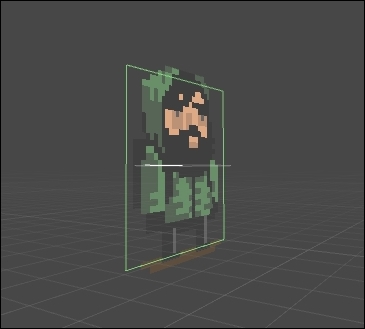Unity makes 2D game development very easy. Don't forget that underneath Unity's user interface, there are a lot of calculations being done for us. In many other graphics rendering engines, we would have to write the code that creates the 2D square that we can then draw our sprite on. With Unity, we simply add a component or two. In the following figure, we can see a 2D sprite from a 3D perspective. A sprite is after all just a quad that is rendered facing the camera.

The 2D quad a sprite is drawn onto
Unity also makes 3D game development much easier. Instead of using quads for sprite rendering, in 3D, we will work from 3D models. A 3D model is a collection of vertices, or points, in 3D space. We then connect those dots and make faces or triangles. This comprises the wireframe structure and surface of our model.
For most games, a 3D model is created by a 3D modeling program or software and then imported into Unity. We will then assign appropriate components to the imported...



